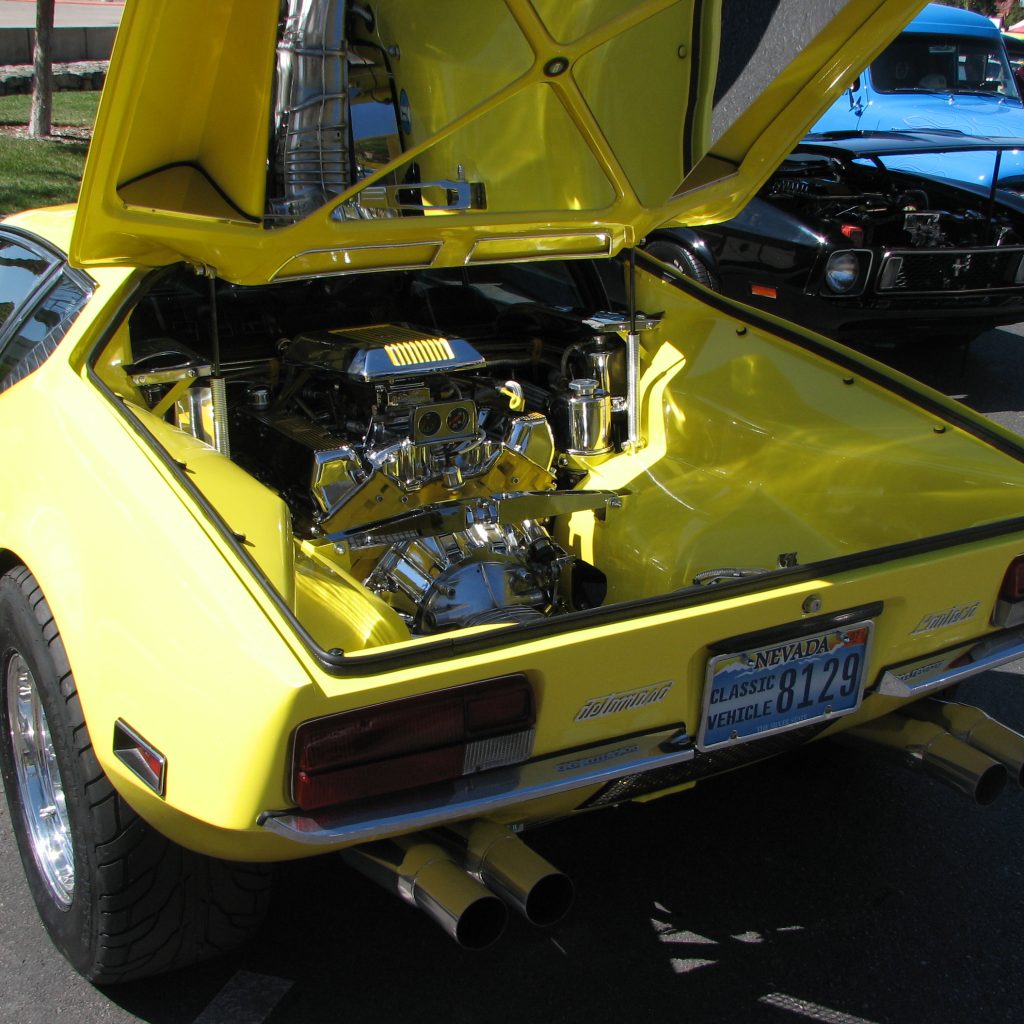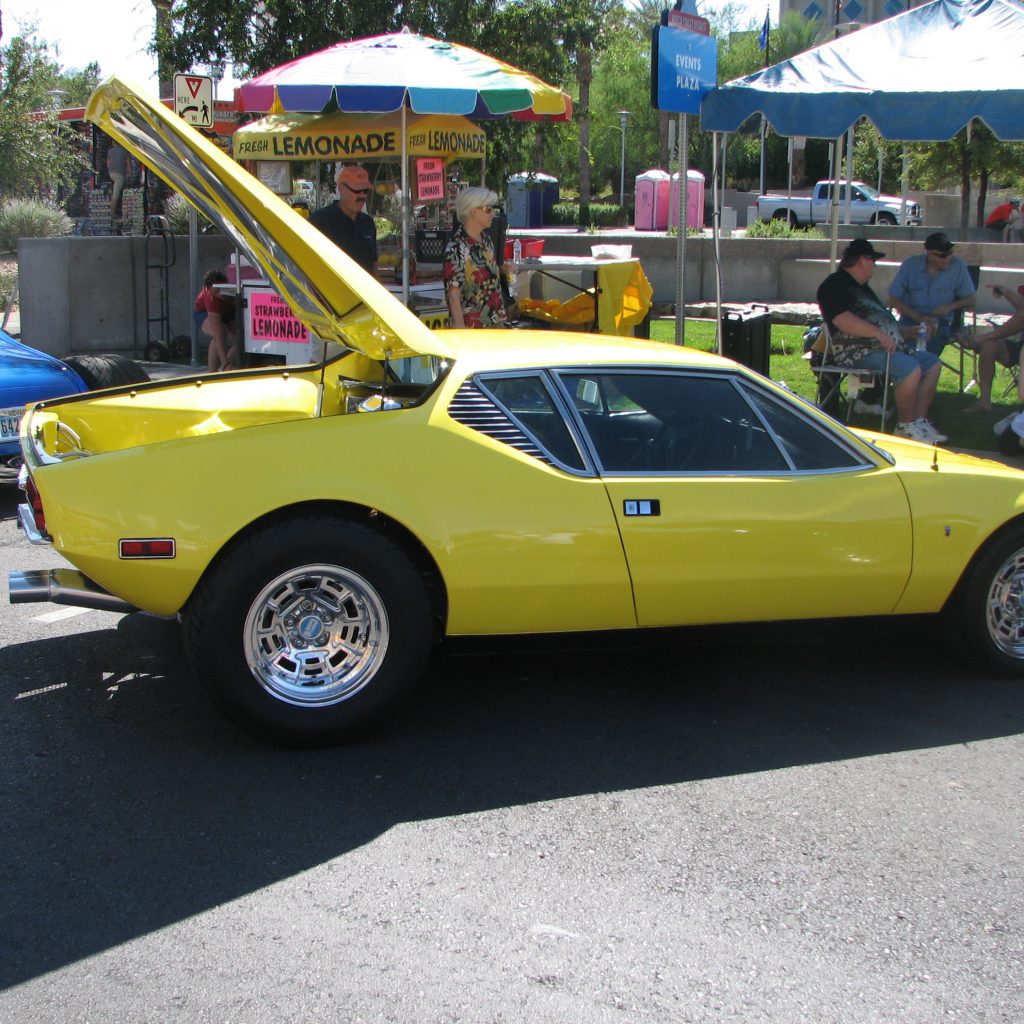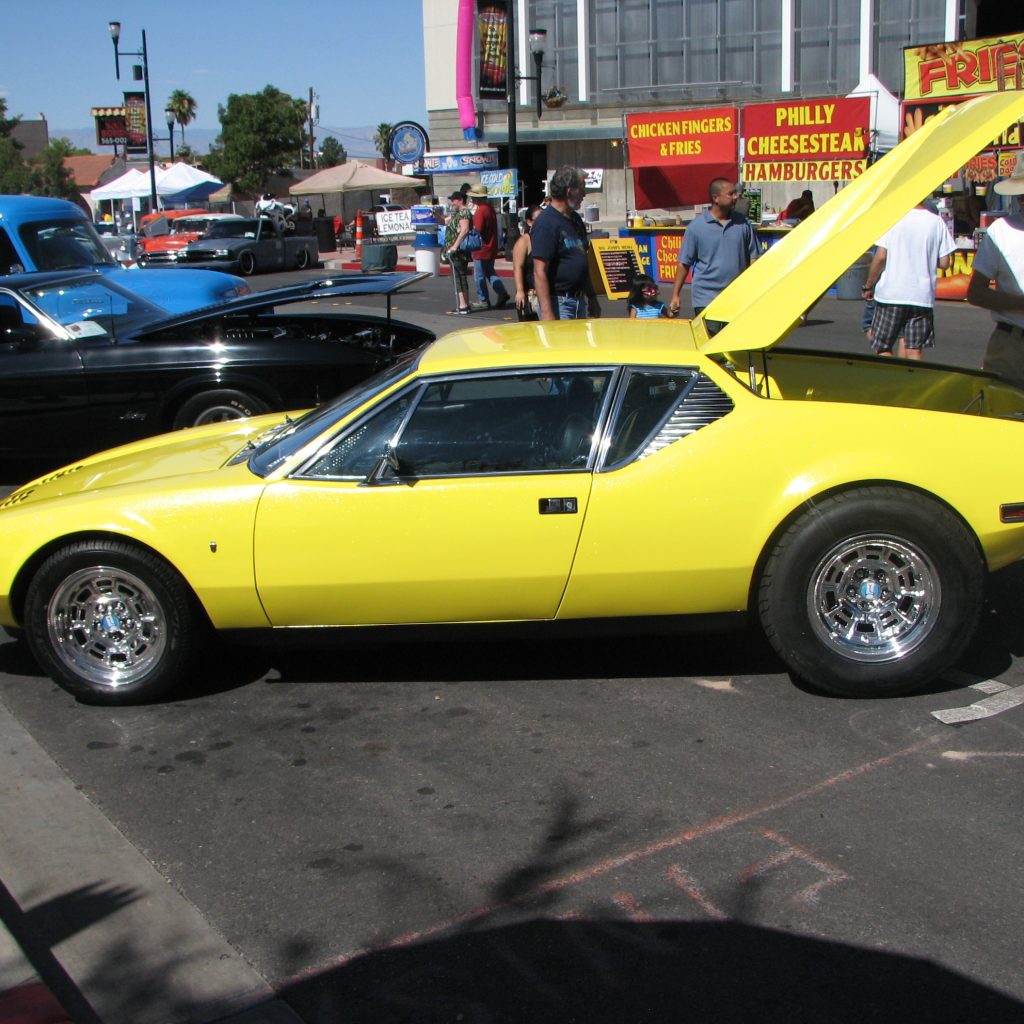



Late in 1971, Ford began importing the Pantera for the American market to be sold through its Lincoln-Mercury dealers. The first 75 cars were simply European imports and are known for their “push-button” door handles and hand-built Carrozzeria Vignale bodies. A total of 1,007 cars reached the United States that year. As with most Italian cars of the day, rust-proofing was minimal and the quality of fit and finish on these early models was poor with large amounts of body solder being used to cover body panel flaws. Subsequently, Ford increased their involvement in the production of the later cars with the introduction of precision stampings for body panels which resulted in improved overall quality.

Several modifications were made to the Pantera for the 1972 model year. A new 5.8 L (351 cu in) four-bolt main Cleveland Engine, was used with lower compression ratio (from 11:1 to 8.6:1, chiefly to meet US emissions standards and run on lower octane standard fuel) but with the more aggressive “Cobra Jet” camshaft (featuring the same lift and duration as the 428 Cobra Jet’s factory performance cam) in an effort to reclaim some of the power lost through the reduction in compression ratio along with a dual point distributor. Many other engine changes were made, including the use of a factory exhaust header.
The “Lusso” (luxury) Pantera L was also introduced in August 1972 as a 19721⁄2 model. For the US market, it featured a large black single front bumper that incorporated a built-in airfoil to reduce front end lift at high speeds, rather than the separate bumperettes still used abroad, as well as the Cleveland engine now having a power output of 264 hp (197 kW) at 5400 rpm. The “L” model featured many factory upgrades and updates that fixed most of the problems and issues the earlier cars experienced. It was so improved that the 1973 DeTomaso Pantera was Road Test Magazine’s Import car of the year beating offerings from Ferrari, Maserati, Lamborghini, and Porsche. During 1973 the dashboard was changed, deviating from two separate pods for the gauges to a unified unit with the dials angled towards the driver.




